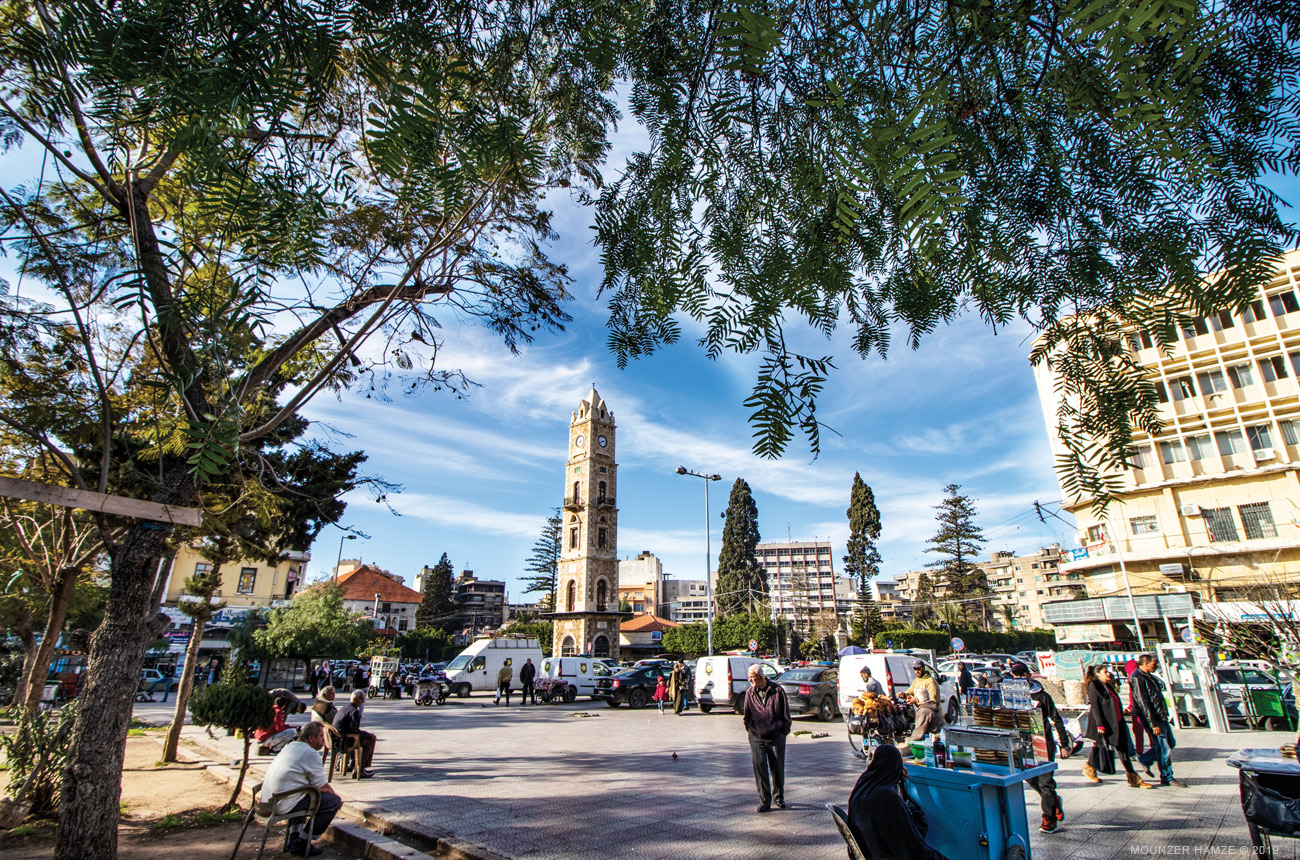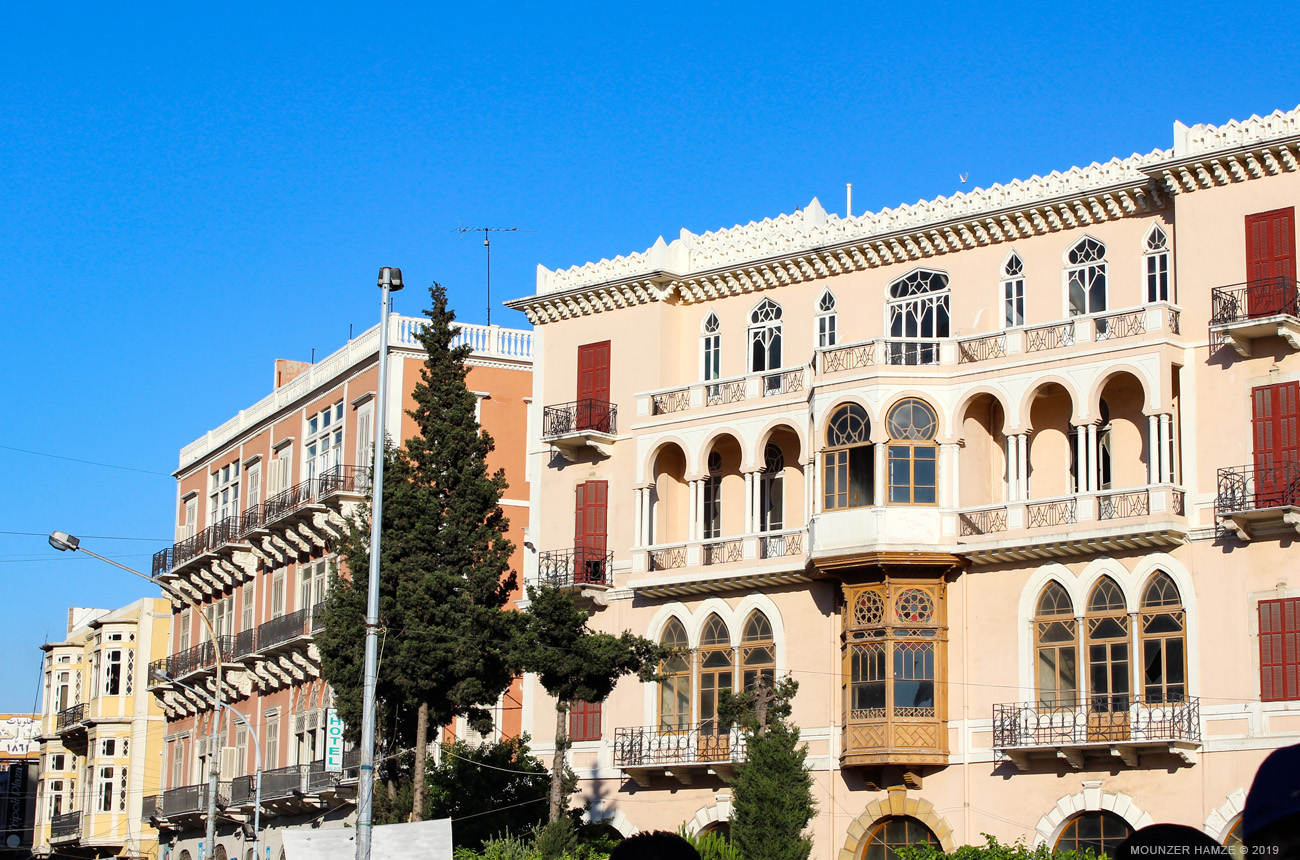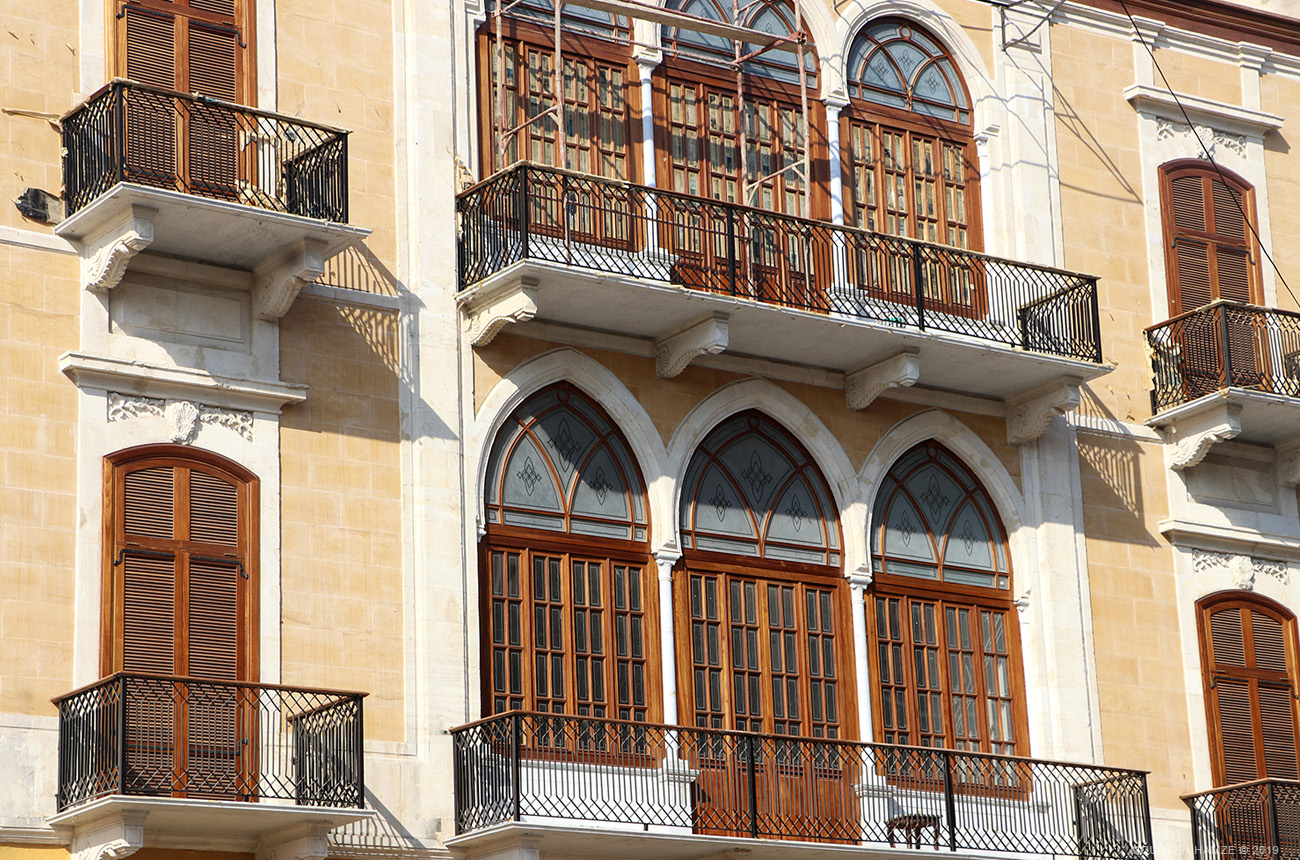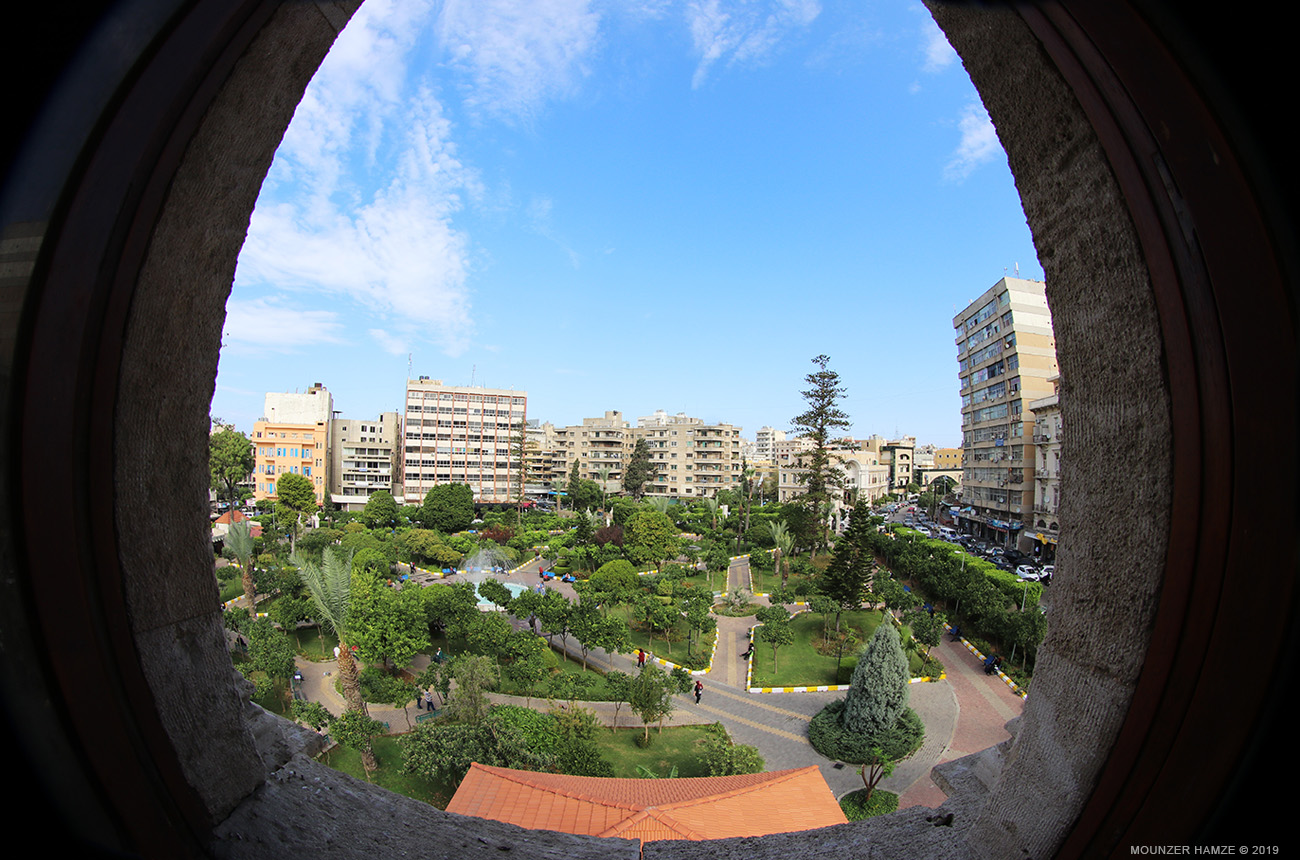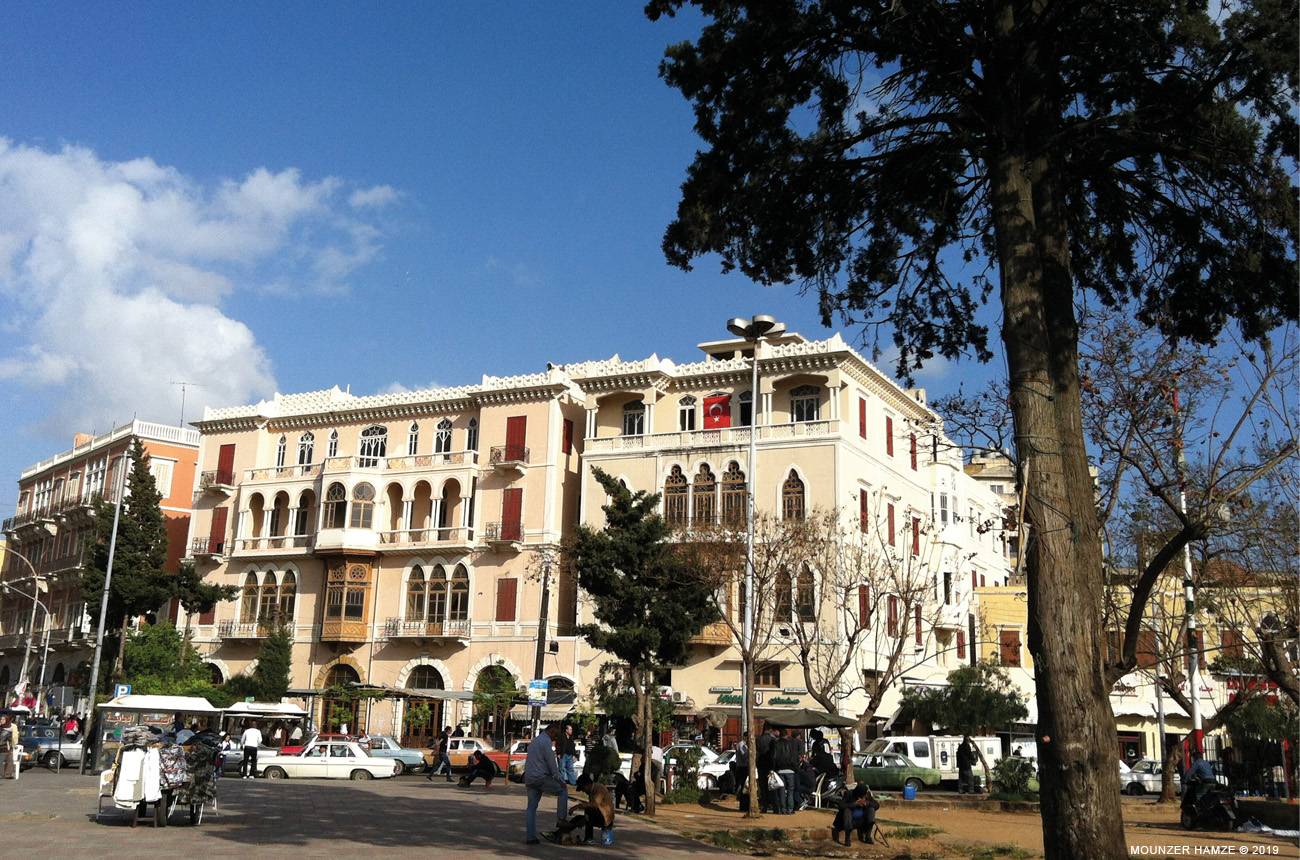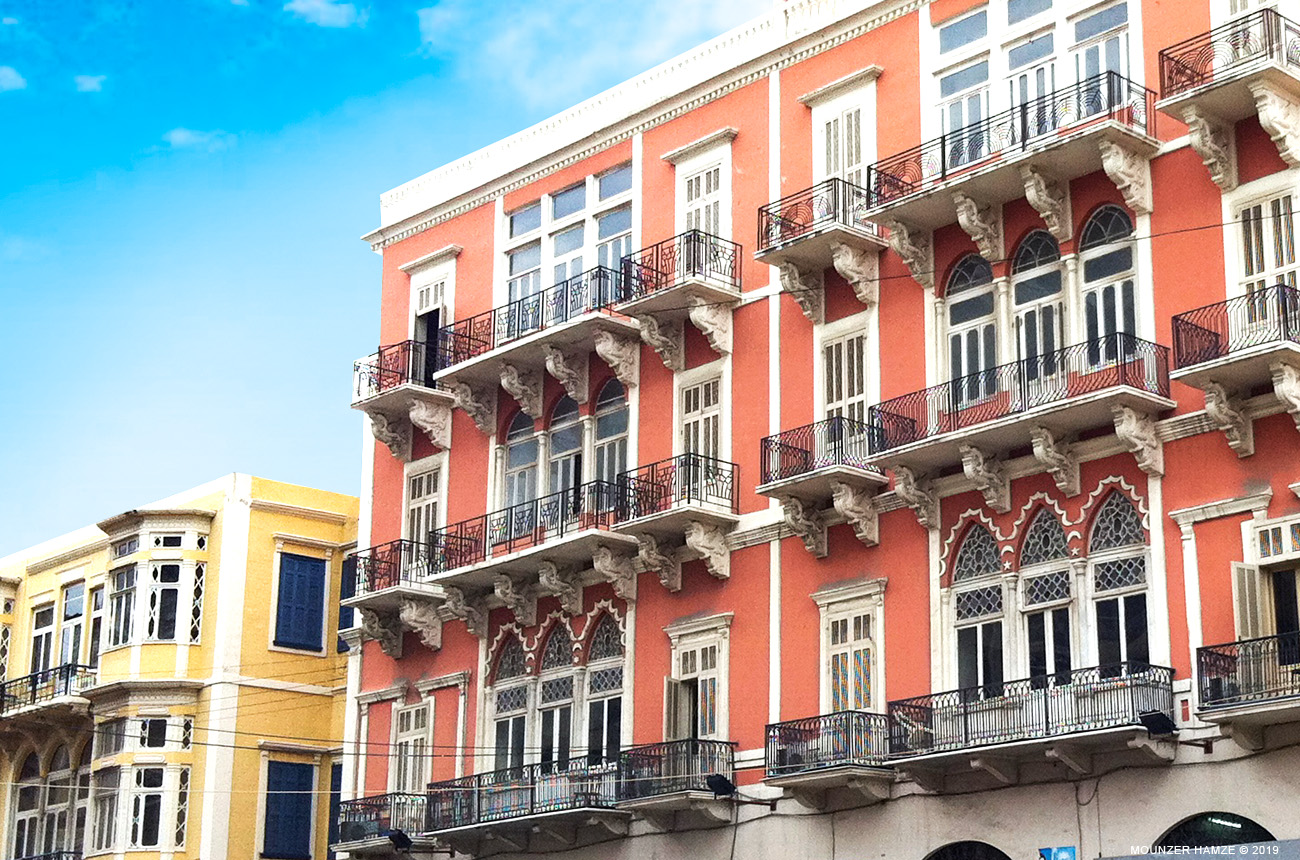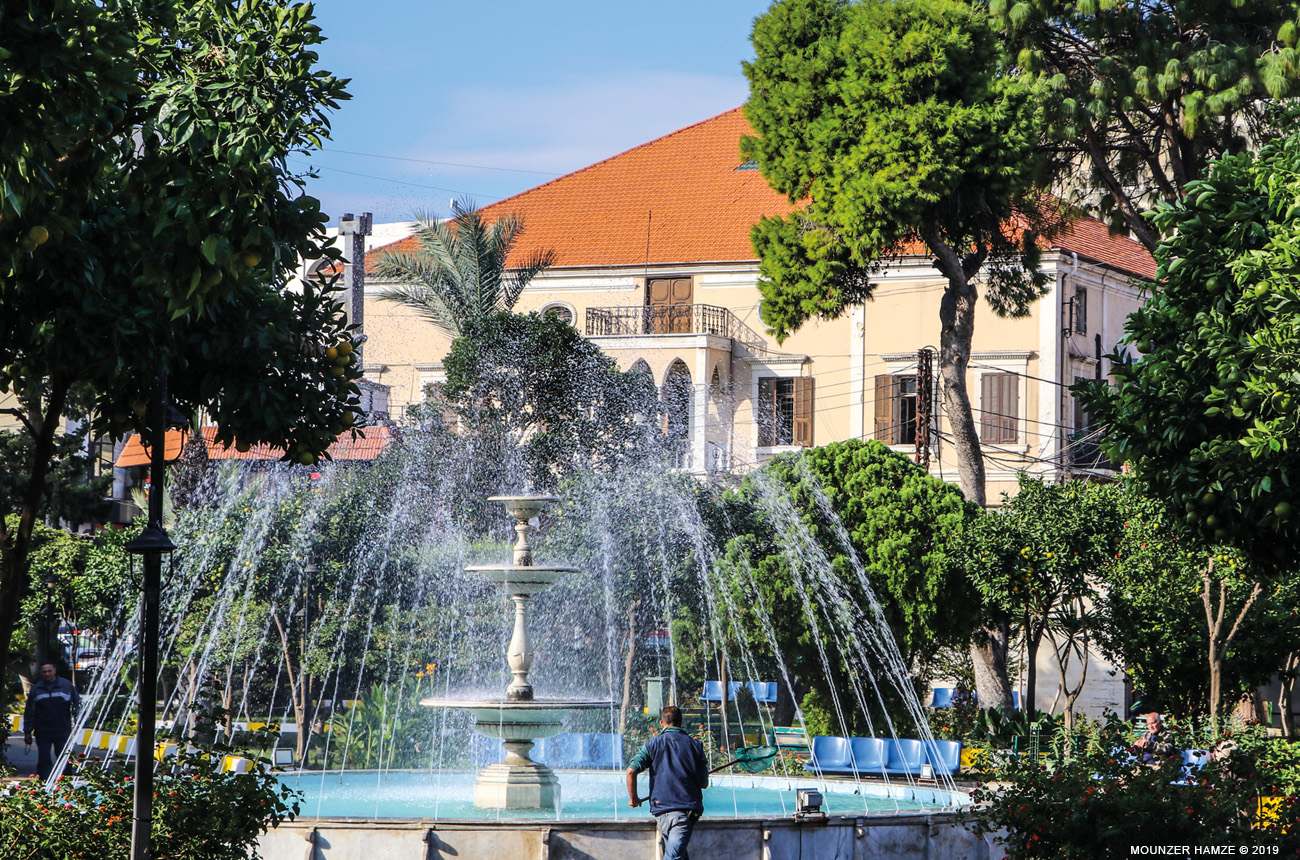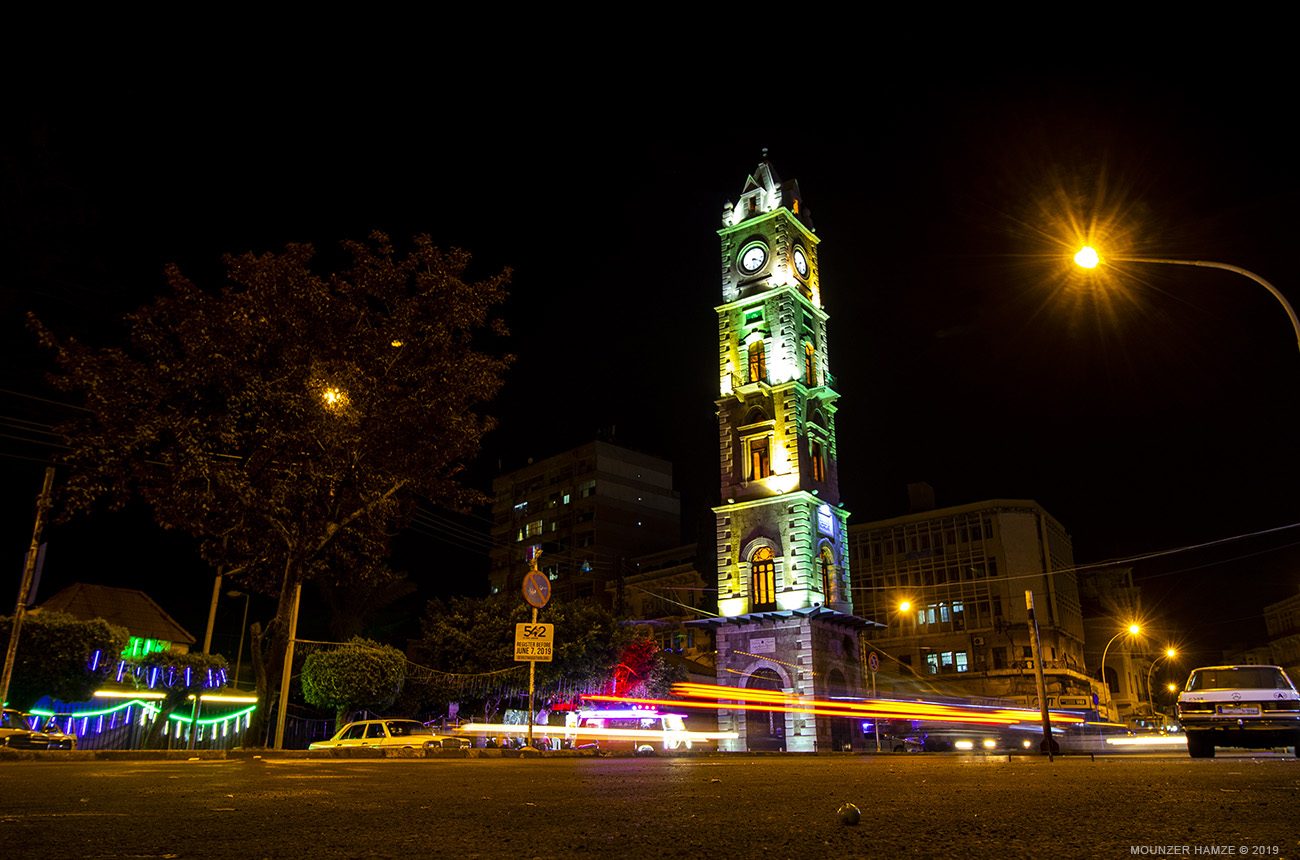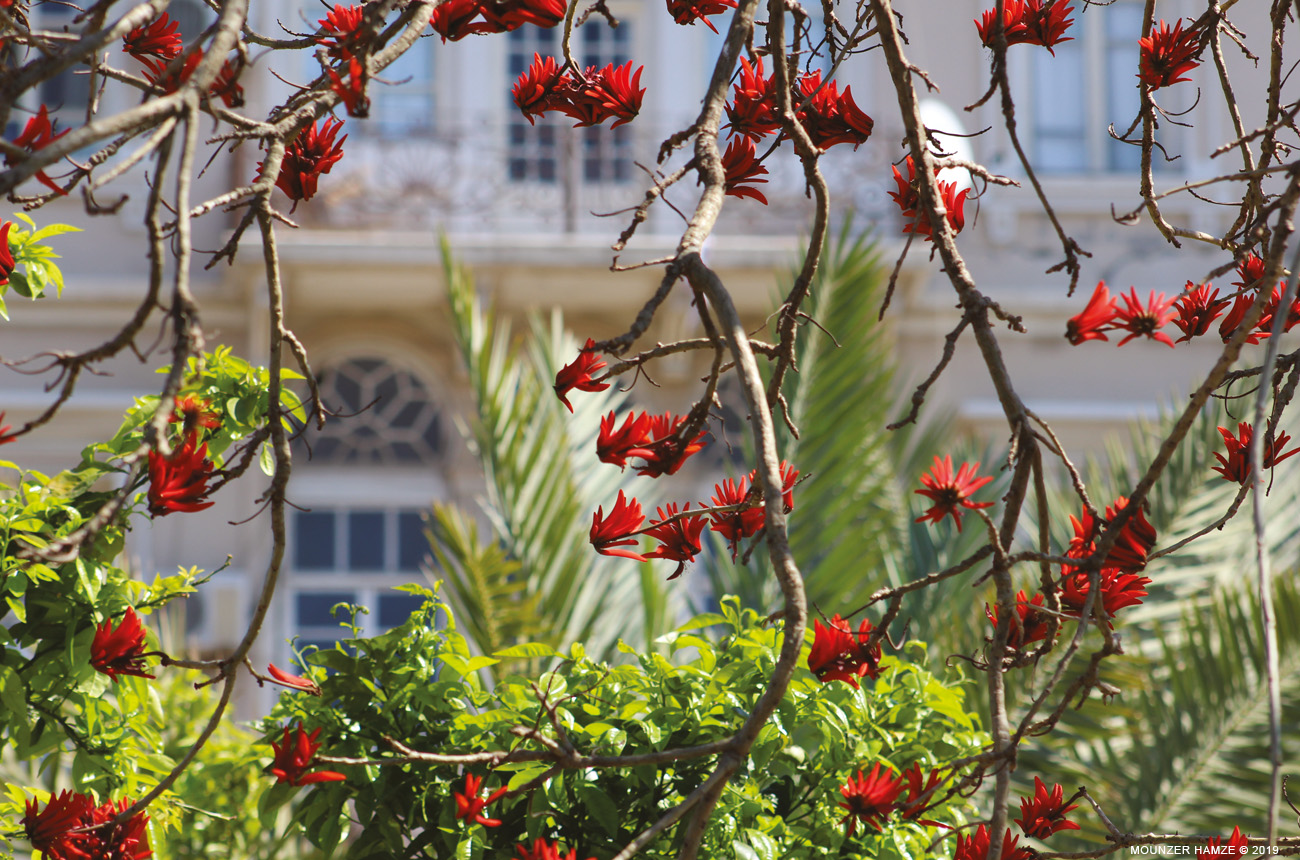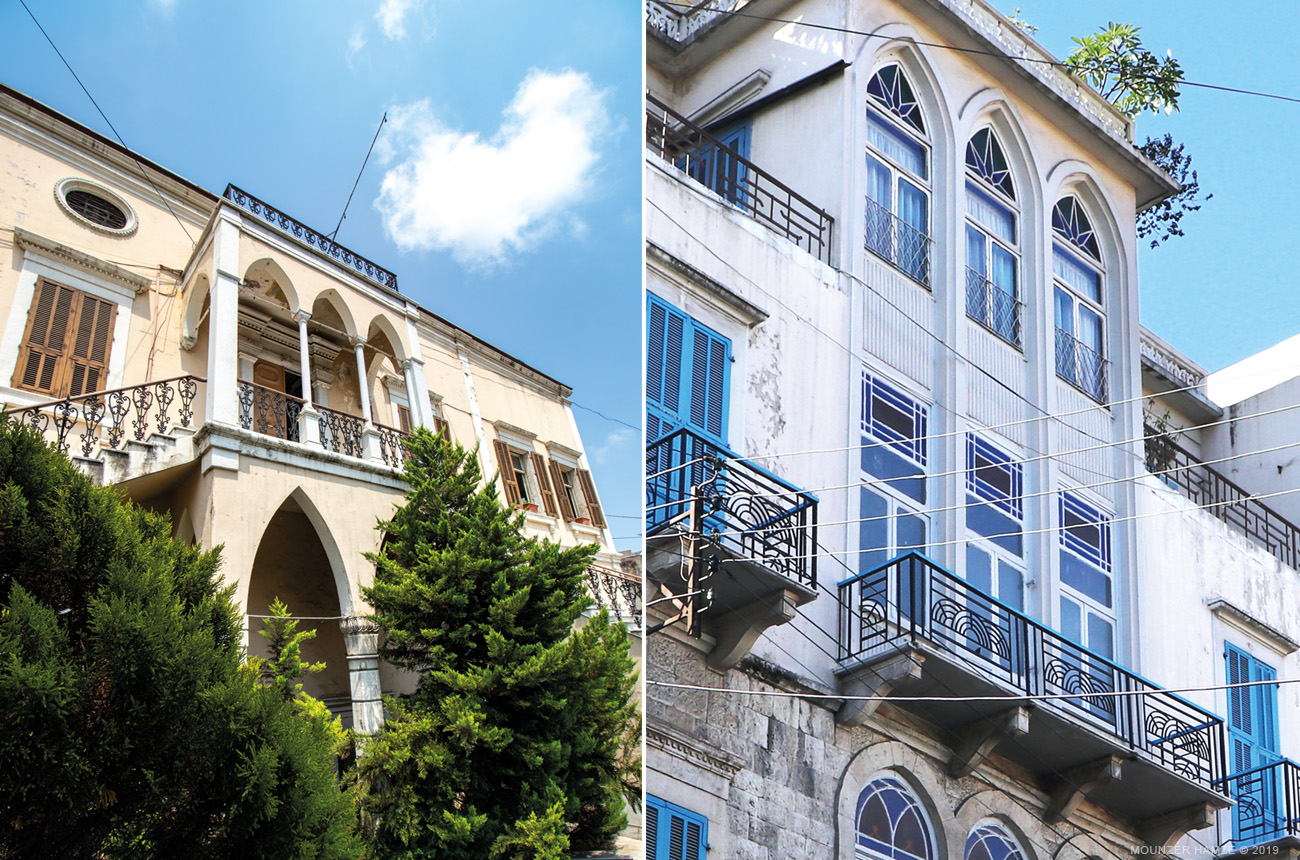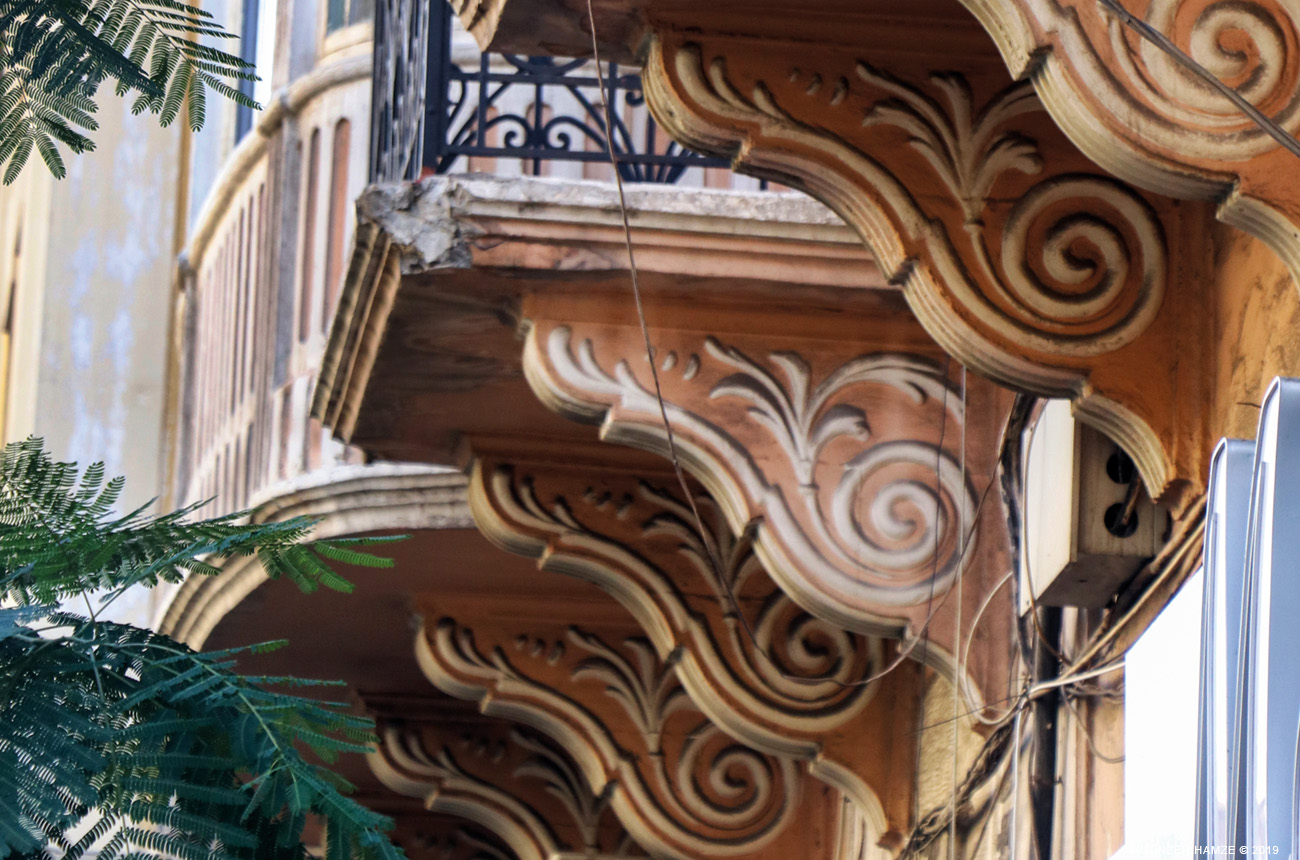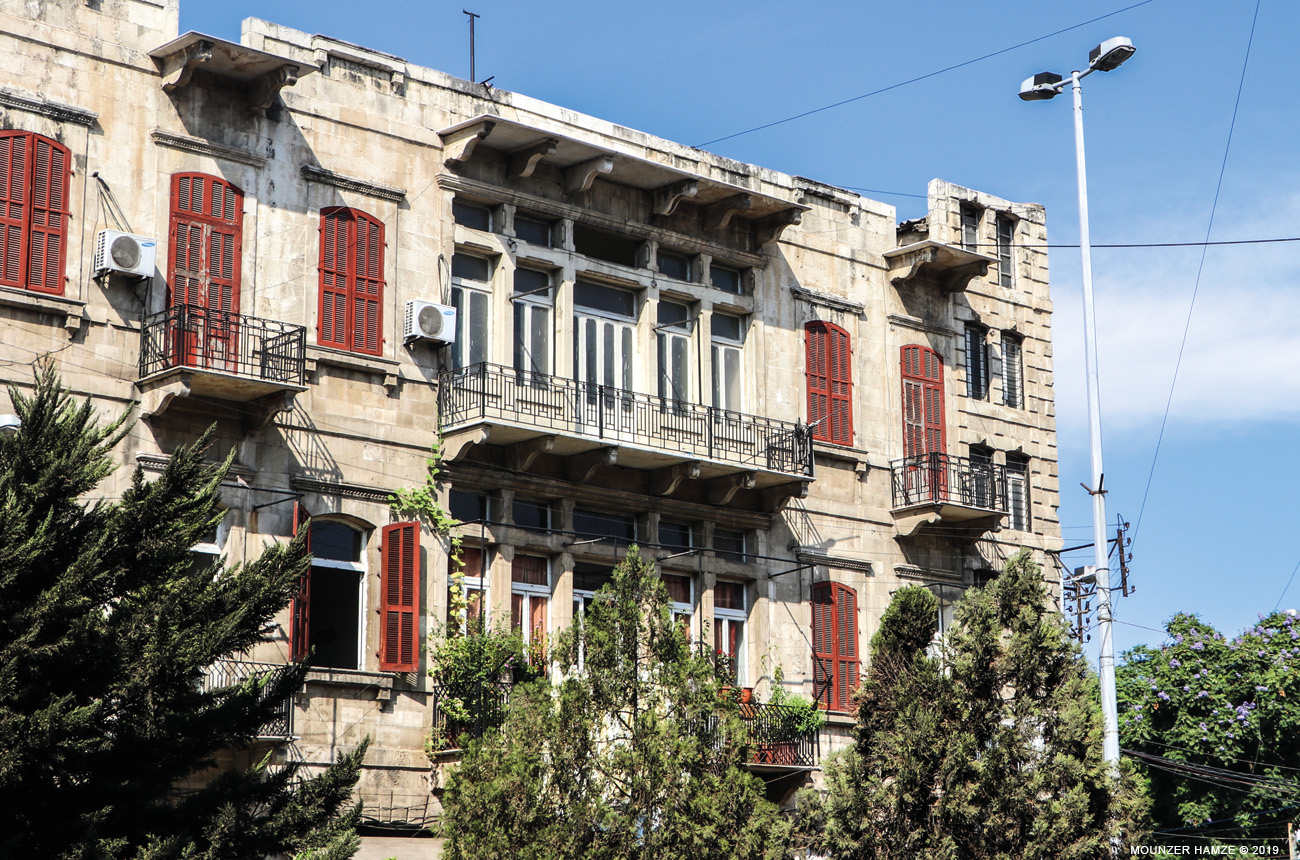Downtown, or what can be called downtown Tripoli is the Tall square and its surroundings. The area extends to the old city’s eastern border and connects to the modern western city wing through Banks street, the beginning of Azmi Street and El-Mina road, up to the borders of Abdul Hamid Karameh (Al Noor) Square south and the outskirts of Zahariya north. This complex Center is the pulsating heart of the city and its modern history which began in the late 19th century During the end of the Ottoman’s rule period and the French mandate.
Tall Square
It is the center of the city and its beating heart, nonstop motion, the taking-off point for those coming and arriving to Tripoli from Beirut or from the surrounding areas, even passengers transiting to Beirut stop here.
This square was established in the late 19th century as the modern city center outside the old Mamluk city. The modernity of this era was represented by Ottoman and European buildings to become today architectural artworks that tell the city’s modern past.
There stands the Tall clock Tower which Sultan Abdul Hamid presented to the city of Tripoli at the end of the Ottoman period in addition to Mansheya Park, the city’s first park 90 years ago.
The first French military plane landed here on sand during World War I (1915) and it was considered the wonder of the wonders. Moreover demonstrations against the French mandate took place before the independence and it witnessed the start of every sit-in or manifestation or protest and still to date.
In this area we may find many restaurants, cafes and hotels. Before the civil war, Tripoli had more than forty hotels. It is also the center of the commercial, economic and administrative city where the famous Ottoman Serail stood and was demolished later on along with the Ottoman bank. Moreover, the tramway station, the post office building, the city hall building were all there. Three quarter of a century ago, the upper hill café was a meeting point for all political discussions and contained an open air cinema. The Anja Theater was also located here where Um Kulthum sang in the thirties.
The first French military plane landed here on sand during World War I (1915) and it was considered the wonder of the wonders. Moreover demonstrations against the French mandate took place before the independence and it witnessed the start of every sit-in or manifestation or protest and still to date.
AL Hamidiya Clock Tower
The Ottomans built it in 1901, a few years before the end of their reign in Lebanon, in the new main square opposite the Ottoman Serail which they built years before and then removed in the 60’s of the 20th century. Its base area is 24 square meters and consists of five storeys with a spiral iron staircase inside. The Hamidiya Clock Tower has become a major symbol and landmark of the city of Tripoli and has recently been restored.
Mansheya Park
The park’s plan is distinctive, a pentagon with five doors at each corner connecting the Manshiyya with its surroundings which is the most important and crowded area of Tripoli.
The most active and important part of the park is to the south of the Ottoman Clock Tower where once stood the Ottoman Serail, City Hall (Municipality) north, and Cesar Nawfal Palace west (now Rachid Karameh Cultural Center)
The garden plan is distinctive, pentagon with five doors on the corners connecting the Manshiyya with its surroundings, where the most important and most active and crowded square in Tripoli. From the south is the Ottoman Clock Tower, where the Ottoman sails were unfortunately removed. To the north is the Tripoli Municipality building, and from the west is the palace of Caesar Nukal, the owner of the garden (Rashid Karami Cultural Center).
Nawfal palace
The Palace Nawfal was built at the beginning of the 20th century and was designed by an Italian architect. it included the “Casino de Tripoli” during the French Mandate and remained a club for French officers for years, later for the Iraqi Oil Company’s employees, staff and Tripoli’s elite in the 60’s. It is now known as Rachid Karameh Cultural Center after the State’s acquisition of the building.
Azmi Beik street
Ottoman governor Azmi Bey ordered to create that road at the beginning of the 20th century as a straight line linking the city of Tripoli with the train station and the seaside.






